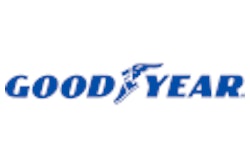COVER STORY
Cat truck proves it’s ready for all hauling terrains
Scan this QR code or visit http://www.truckersnews.com/testdrives to view a photo gallery of this truck. Find a QR reader in your device’s app store.
Usually you go to the truck. But sometimes, the truck comes to you. And that’s what happened when Truckers News reached out to Caterpillar and told the manufacturer we wanted to drive one of its new heavy-duty, on-highway trucks. As it happens, the Truckers News editorial offices are in the same town — Tuscaloosa, Ala. — as RACON Construction, the company that is already receiving the very first production trucks off the assembly line. As a result, the local Cat dealer in our area, Thompson Tractor, helped Caterpillar with validation testing on the new models and is set up to service the trucks.
Unless you’ve been orbiting the moon for the past five years or so, you’re probably aware that Cat has come back strong into the on-highway truck market. For decades, its presence on North American highways was under the hood — as yellow Cat engines powered, and continue to power — many of the big rigs thundering down the roadways today. More to the point, Cat yellow iron customers use trucks, and they use them a lot. And — thanks in large part to the Peoria, Ill., company’s legendary dealer support — they’re also fanatically loyal to the brand. As Cat executives studied their customers’ needs and the markets they manufacture equipment for, the need to offer an on-highway truck became more and more apparent.
Flash back to this time last year in Las Vegas, when and where Cat gave the world the first sneak-peek at its new truck. It is well-documented that Cat takes what it calls a “donor truck” from Navistar as the basis for its CT Series. But Cat officials at the time stressed that from the frame rails up, their truck was essentially all new. Under the hood, the engine block once again gleams with that old, familiar Caterpillar yellow paint. The engines, too — the Cat CT13 and CT15 — are International MaxxForce diesels. But it’s worth noting that there’s an awful lot of Cat DNA present in that engine block. International and Cat have collaborated on engine designs for years. And the fuel system on the MaxxForce series of engines is a Caterpillar design.
In a time when it seems news stories are all too often about companies leaving the truck market, it’s exciting to see a major player like Cat inject some new energy into the big rig universe. Cat didn’t get where it is in the world today by cutting corners. Clearly the company knew an intense spotlight would be focused on it when it decided to enter the on-highway truck market. The resulting vehicle would have to be exceptional to withstand all the scrutiny. How would the new Cat truck perform in the real world? I found-out during one of the first extended test drives.
Down to the swamp
For once, I get to drive a route I know like the back of my hand. Usually, I’m in the middle of Washington, Texas or Arizona, with no real idea of where I am and where I’m going to end up. But I’ve run the roads for this drive all my life.
With me for the day in my Pearl White Cat CT660 is Adam Ackermann, a Midwesterner who serves as the liaison between the Cat executives up in Peoria and Thompson Tractor down here in Dixie. Like many in this industry, Ackermann grew up in Illinois wanting to work with big trucks. When Cat offered him the chance to get in on the highway truck program’s ground floor, he jumped.
Adam brought me a dual-axle straight truck to drive today. It’s not the usual type of rig you see in the pages of Truckers News, but Cat trucks of any type are hard to get these days. Cat also is currently producing a regional-haul tractor with a daycab. Right now, the company is concentrating on getting construction-specific models into the marketplace, for obvious reasons, and remains coy on any plans for long-haul, sleeper-cab models. (It’s worth noting that Cat already has such a model for sale and running through the Australian Outback.)
It’s raining hard this January morning. But at least it’s not too cold. The route I’ve picked will give us a good mix of road conditions to take the truck through. We’ve got a full load of pea gravel in the dump body, and our trip will give us a solid mix of interstate and two-lane roads. We’ll cross the fall line on Interstate 20/59 running southwest toward Mississippi, through the flat swamps in Greene County, Ala. before turning off in the dying cotton town of Boligee for a long run on the back roads leading to the hill country around Greensboro, Ala. (famously called “Greenbo” in “Forest Gump”), and finally back to Tuscaloosa.
Walking around the truck before our drive, I’m once again struck by how progressive the vehicle styling is and how attractive a vehicle it is. Cat wanted to be sure they integrated the overall “look” of the CT Series trucks into that of the equipment lines — as much as that was possible. To that end, the CT660 borrows many styling cues from Cat’s wheel-loader line and the overall effect is outstanding. It’s a tough yet modern-looking truck, combining a highly aerodynamic hood and front fenders with distinct styling cues that make it instantly stand out in a crowd. This is exactly the blending of old and new design elements that appeal to contractors and truckers the world over.
Cat has a lot of experience keeping operators comfortable and productive on loud, vibrating pieces of construction machinery, and its engineers clearly leveraged that know-how when they designed these truck cabs. All instrumentation is exceptionally well-lit, and switch and control placement is logical and ergonomic. There’s tons of extra storage space, and the burnished aluminum accents on the dash and door facings only add to the overall tough, durable feel. Climbing up into the Cat, the first thing that jumps out is just how macho this interior looks. Everything in the cab — from the dash covering, to the arm rests and gauges — fairly screams “testosterone.”
The cab is so well laid-out that getting the seat and mirrors adjusted takes no time at all. A quick scan to all quarters confirms what I expected: Views to the front, sides and rear are all outstanding, with the sight angle out over the dramatically sloped front hood clearly designed with safety foremost in mind. Firing up the big Cat CT13 engine, it’s obvious that this interior is more than just show. The cab is extremely quiet. Even better, Cat engineers feel strongly that any unintended noise is a productivity-draining distraction. Their efforts to eliminate “buzz, squeak and rattle” completely from the cab are to be commended: This is one tight, well-fitted interior. Ambient sound levels — even at highway cruising speeds — reflect that.
The combination of engine power and tight steering held all the way up into the hill country as sharp curves and steep grades appeared out of the mist in front of us.
Another nice touch is the Cat CX31 six-speed automatic transmission. You can get an Eaton-Fuller manual as standard equipment, of course. But the CX31 is definitely worth a look. It began its life in Cat’s line of off-highway, articulated haul trucks: trucks that spend long days slogging through gumbo mud or doing “light” quarry work. To say this is a tough transmission is an understatement. Cutting its teeth in applications such as those means the transmission is robust enough to manhandle any hill start you can find. But, interestingly, it also engages and shifts smoothly out on the highway. Even better, the CX31 has been programmed for both power and fuel economy. Shift points are logical throughout the power curve and even on tight, hilly back roads it doesn’t spend a lot of time searching back and forth for the right gear to keep you rolling on down the highway.
With 475 horsepower sitting under the hood, I’m not surprised to find the CT660 gets up and moving in a hurry — even with a full load in the dump behind us. The Cat CT diesel family consists of EGR-only engines. There is no diesel exhaust fluid tank or urea after-treatment in the exhaust system. Cat says this configuration simplifies life for both fleet owners and drivers while delivering reduced smokestack emissions without compromising power or fuel economy — which is rated slightly above 6 mpg right out of the box for this truck. All told, the CT13 is exceedingly quiet out on the road with plenty of smooth, on-demand torque and power. It’s an engine that has the raw power required to get a fully loaded dump out of a muddy rut but still cruise endlessly down a straight stretch of road without skipping a beat.
A nice surprise on this rainy Alabama day is the well-heeled handling characteristics this truck exhibits. Nothing highlights design defects in steering and handling like bombing down a rain-slicked interstate at 65 mph. But the CT660 was unusually sure-footed in the rain. Steering response to control inputs was intuitive and precise. The truck didn’t wander all over the road, even when blasting through deep puddles of standing water. It’s a nice shot of confidence that the truck is up to the task at hand when you’re behind the wheel.
As we transitioned off the highway and onto two-lane back roads, confidence levels remained high. The combination of engine power and tight steering held all the way up into the hill country as sharp curves and steep grades appeared out of the mist in front of us.
Another interesting aside was that very few cars behind us felt the need to pass — as is so often the case when you’re taking a big rig down a hilly, two-lane highway. Partly this was due to the poor weather conditions, but the CT13 accelerates so well no doubt some of those other drivers didn’t feel we were holding them up all that much. Ultimately, based on my time behind the wheel of the CT660, I think you can expect Caterpillar trucks to make their mark on the trucking industry in the months to come.
Cat CT660 Drive Test Specs
Model profile: 2012 660S SBA 6-by-4 (CF7AA)
Application: Construction dump
Mission: Requested gross vehicle weight rating: 58,000; calculated GVWR: 66,000
Calculated startability/gradeability: 36.30 percent/2.83 percent at 55 mph
Calculated geared speed (maximum road speed at governed rpm): 89.2 mph
FUEL ECONOMY: 6.47 mpg at 55 mph
DIMENSIONS: Wheelbase: 207 inches; CA: 145 inches; usable CA: 139 inches; axle-to-frame: 63 inches
ENGINE, DIESEL: CT 13; EPA 2010 emissions; 475 horsepower at 1,700 rpm; 1,700 lb.-ft. torque at 1,000 rpm; 2,100 rpm governed rpm
SPEED: 475 peak horsepower (max)
TRANSMISSION, AUTOMATIC: Caterpillar CX31, first-generation controls; six speeds, includes oil level sensor, with PTO provision for on/off highway
FRONT AXLE (nondriving): Meritor MFS-20-133A wide-track, I-beam type, 20,000-pound capacity
REAR AXLE, TANDEM: Meritor RT-46-164P, single-reduction, standard width, 46,000-pound capacity, with lube oil pump, with driver-controlled locking differential in both forward rear, and rear rear axle, gear ratio: 4.89 and 200 WheelCAB: conventional
TIRE, FRONT: Two; 425/65R22.5 G296 MSA (Goodyear) 468 revolutions/mile, load range L, 20 ply
TIRE, REAR: Eight; 11R24.5 G282 MSD (Goodyear) 475 revolutions/mile, load range H, 16 ply
SUSPENSION, REAR, AIR, TANDEM: Hendrickson Primaax EX 55-inch axle spacing; 46,000-pound capacity; 9-inch ride height with shock absorbers mounted in standard location
PAINT: Winter white (standard); Frame: Canyon black (standard)









